PHOENIX CO2 LASER SYSTEM
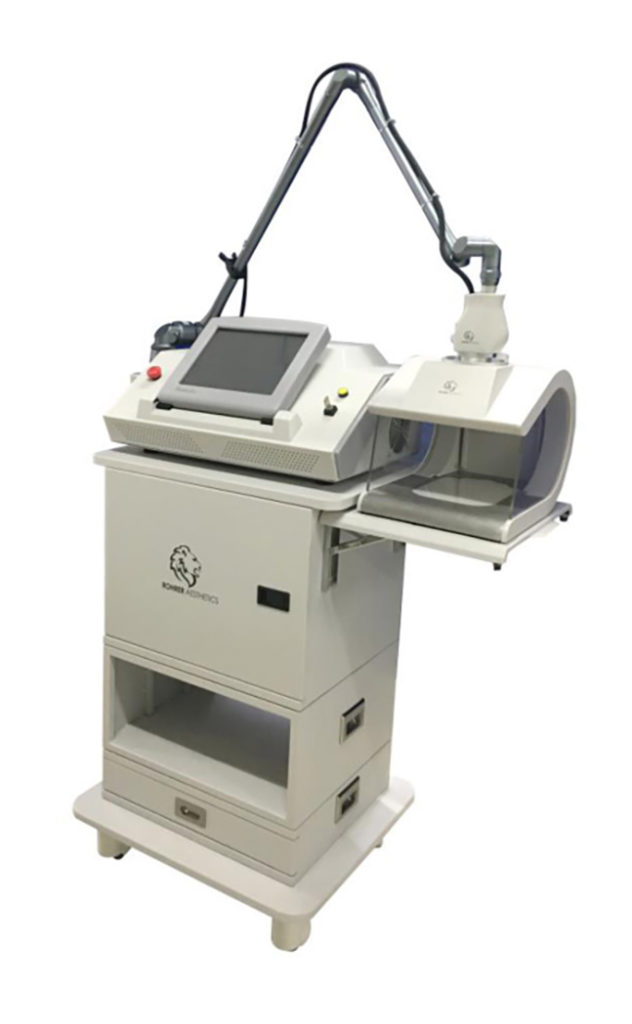
Indications for Fractionated CO2 Laser Systems
- Sun-damaged skin
- Aging skin
- Skin Texture irregularities
- Pigmented dyschromias & scars
- Skin striations
- Early Rhytids
- Wrinkles
- Ablation and resurfacing of soft tissue
Phoenix Co2 laser system Features
- 80mj per pulse(10,600 nm)
- 100 μm for cutting or vaporization
- Micro –Thermal Zone CO2 Scanner
- Adjustable pattern size from 5mm up to 30mm
Fractional Technology: How it Works
- The Phoenix CO2 laser emits light at a wavelength of 10,600nm that is absorbed strongly by water down to the lower dermis.
- Each pulse of CO2 energy ablates a vaporized column of tissue. As ablation occurs, deep heating stimulates collagen growth and remodelling.
- The laser energy is distributed in an even pattern, leaving little areas of untreated skin in-between spots. This facilitates the healing process and reduces patient downtime.
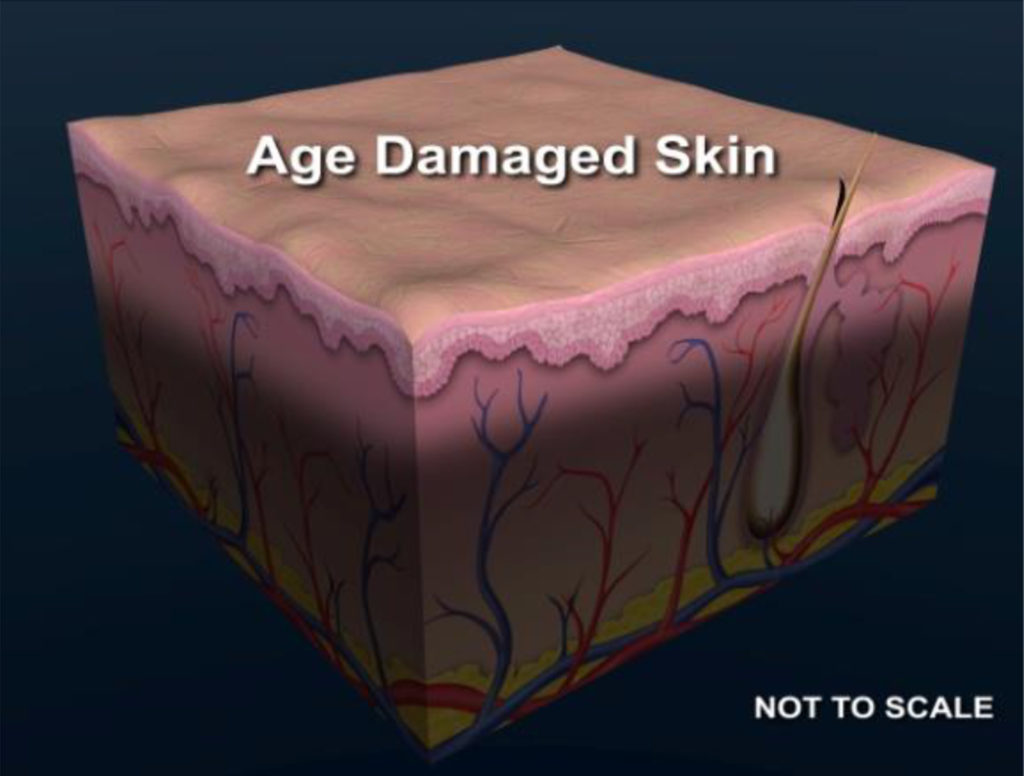
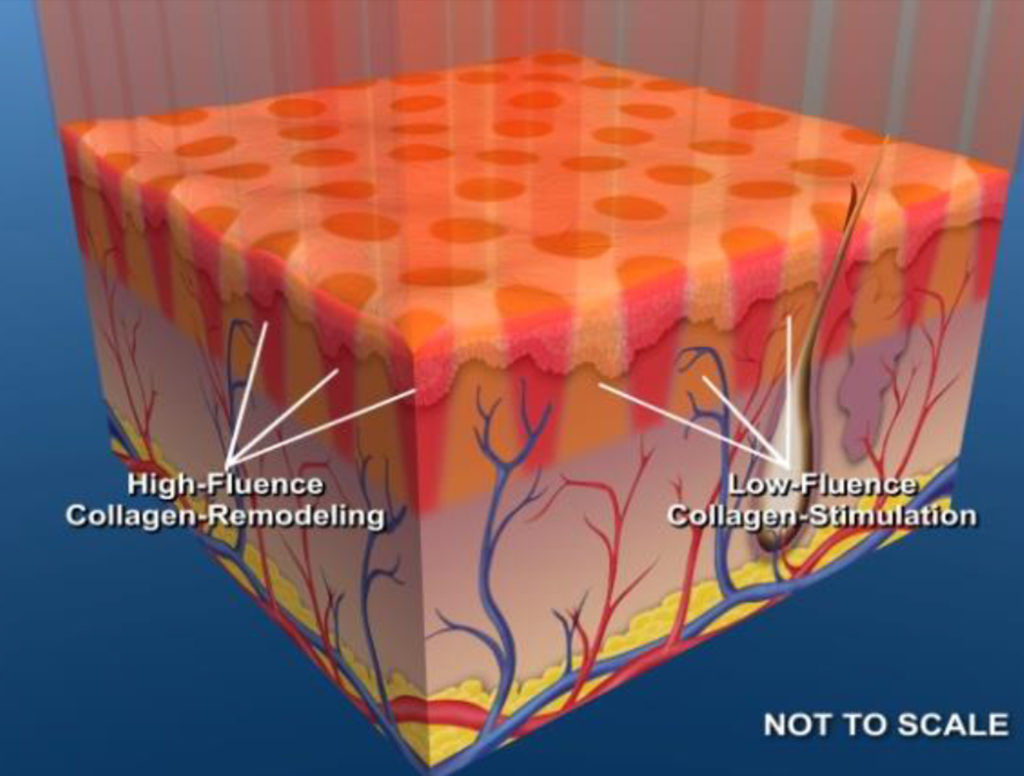
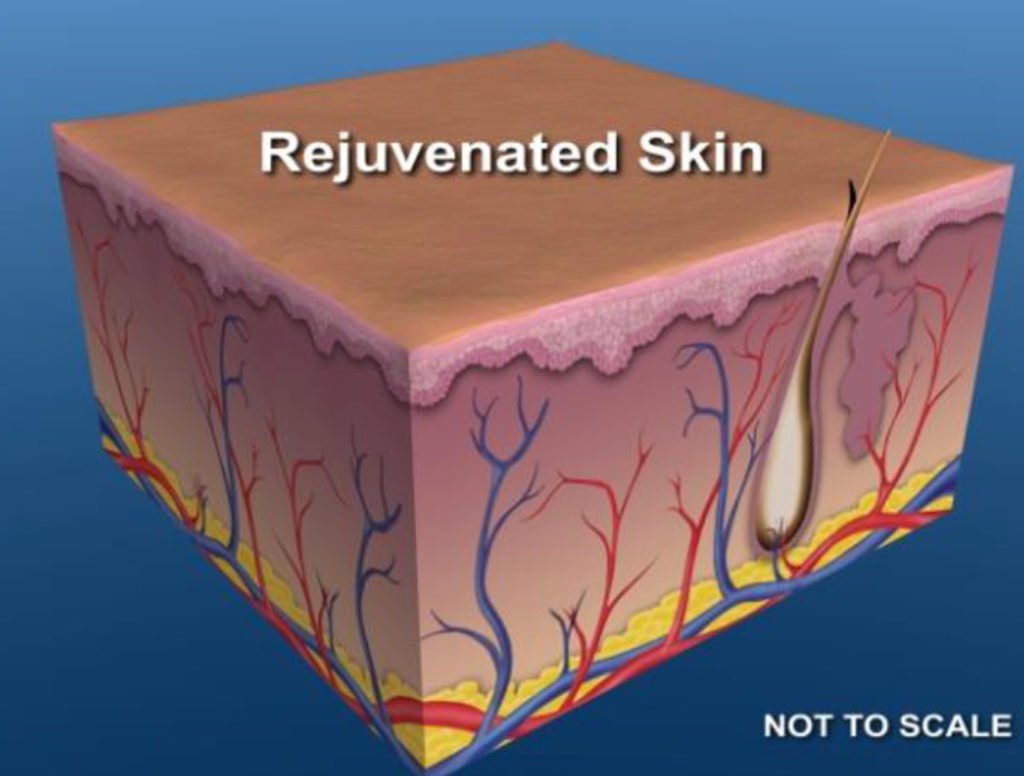
Fractional Technology: How it Works
Treatment approach:
- Remove all make-up and visible hairs from the area to be treated
- Examine the treatment area carefully for any signs of carcinoma proceed only if you are sure that no signs exist
- Both operator and patient must wear protective eyewear
- Apply topical anesthetic and wait (~45-60 min)
- Thoroughly remove topical anesthetic
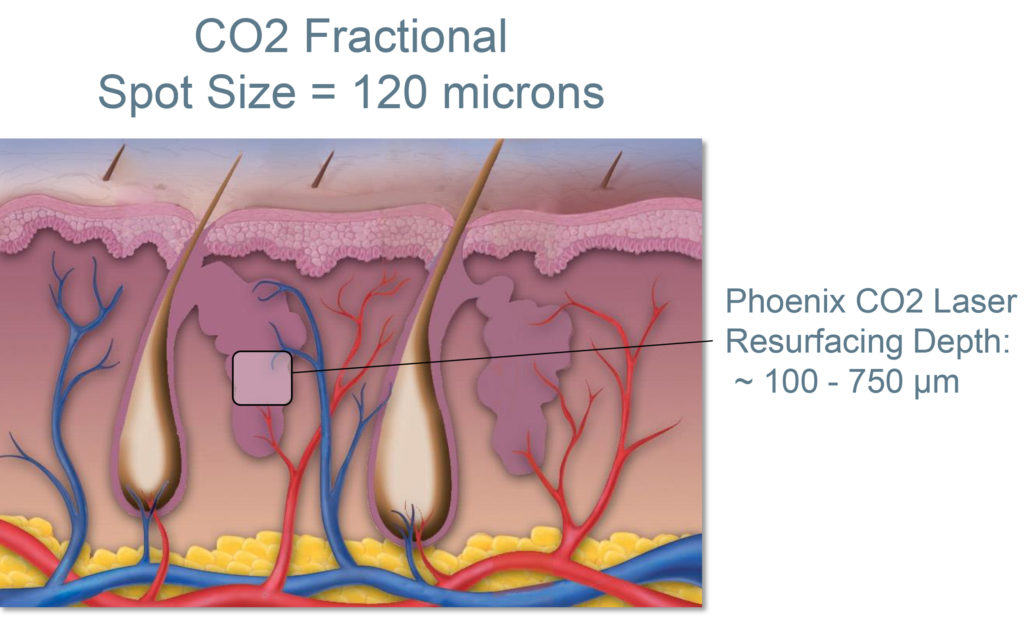
Consultations Are Available Now ?
Take the first step. Get your questions answered and find out which treatment options are best for you by meeting with our expert providers at Novique Medical Aesthetics for an in-person consultation.
Simply fill out the form on this page, and one of our experienced team members will reach out to you promptly to schedule your consultation.
Post-treatment Instructions
Day 1 (1st day after treatment):
- Sun burned appearance with tight feeling
- Avoid direct sunlight and excessive heat
- Begin washing face as needed with tepid water and gentle cleanser (use your hands only)
- May take tepid shower and wash hair
- Re-apply ointment/cream to treated area as needed (ensure skin remains constantly moist)
Day 2:
- Swelling should subside and skin may bronze and feel gritty
- Itching (particularly along the jaw-line) tends to begin on this day
- Continue applying ointment/cream (and cool compresses, if needed)
- Continue washing face with gentle cleanser and tepid water
- For extreme itching, hydrocortisone cream (OTC 1%) may be applied
- AVOID picking and/or scratching
Day 3:
- Facial skin should begin peeling between days 3 and 5
- Continue washing face with gentle cleanser and tepid water
- Itching may persist
- The central aspect of the face should begin to exfoliate today leaving behind soft pink tissue
- Continue applying ointment/cream, especially on sides of face by hairline
Day 4 – Day 7:
- Itching has usually subsided
- May start more aggressive washing with fingertips to promote further exfoliation (do not pick)
- If using an occlusive ointment, may transition to a cream and spot-treat drier areas that may still have some rough skin with occlusive ointment
- Use non-irritating sunblock SPF 30+ with zinc oxide (7-9%) and/or titanium dioxide when going outside
- If needed, may apply mineral make-up (powder)
Day 7-28
- Continue appropriate moisturizer until skin has hydrated back to its normal level (3-4 weeks)
- May start regular skin care program as long as treated area is healed (no exfoliation)
- Continue applying non-irritating sunblock (SPF 30+) and use mineral make-up (powder) to protect treated areas (Do not use liquid foundation as it may clog pores and irritate new skin)
- Avoid exposure to excessive sun for up to 4 weeks (hat or clothing must be used to protect treated areas)
- May return to exercise programs
Complications
Laser skin resurfacing complications include:
- Hypopigmentation
- Scarring (generally resolves over time with steroid treatment)
- Induration that generally resolves over time with steroid treatment
- Formation of fibrotic tissue that generally resolves over time with steroid treatment
- Preauricular flap necrosis
- Post auricular skin slough/loss
*Healing will vary based on individual and on intensity of treatment*
Healing Process
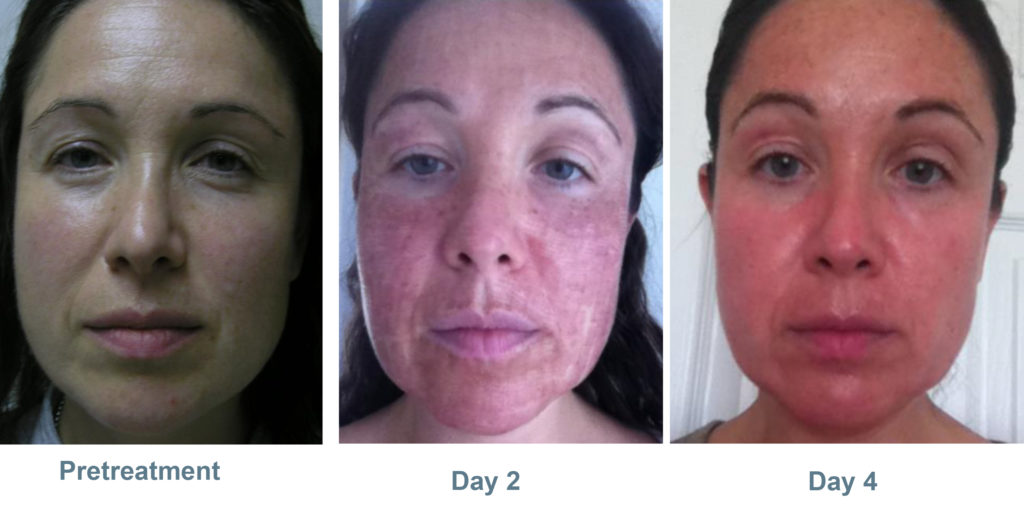

*Individual Results May Vary*
Outcome and Prognosis
Results of laser resurfacing are good to excellent depending on the indication for which the procedure was performed.
Patient satisfaction is based on the delivery of natural results with minimal downtime and a low incidence of complications.
Actinic changes are improved to the greatest degree. Wrinkles typically are improved by 60-80%, while scars are improved to a lesser degree.
Improvement can be seen in deeper skin folds of the cheeks, forehead, and neck, malar bags, and even in the excess skin of the upper eyelid (pseudo blepharoplasty effect), but their improvements are less predictable.
Static lines are improved to a greater degree than dynamic lines. Treatment of these dynamic lines with botulinum toxin A provides significant improvement.
Heat stimulates the sub dermal collagen to regenerate over 60 – 90 days. Patients should be reassessed and/or retreated at 3 – 6 months.
Healing Process





*Individual Results May Vary*
Take the First Step – Request A Consultation
Please fill out the form on this page to request an in-person consultation and one of our knowledgeable medical staff members at Novique Medical Aesthetics will reach out to you promptly. You can also call our office directly at (267) 356-4222.
Novique Medical Aesthetics serves the Philadelphia, Doylestown, PA, & Bucks County Area.
*Individual Results May Vary*
